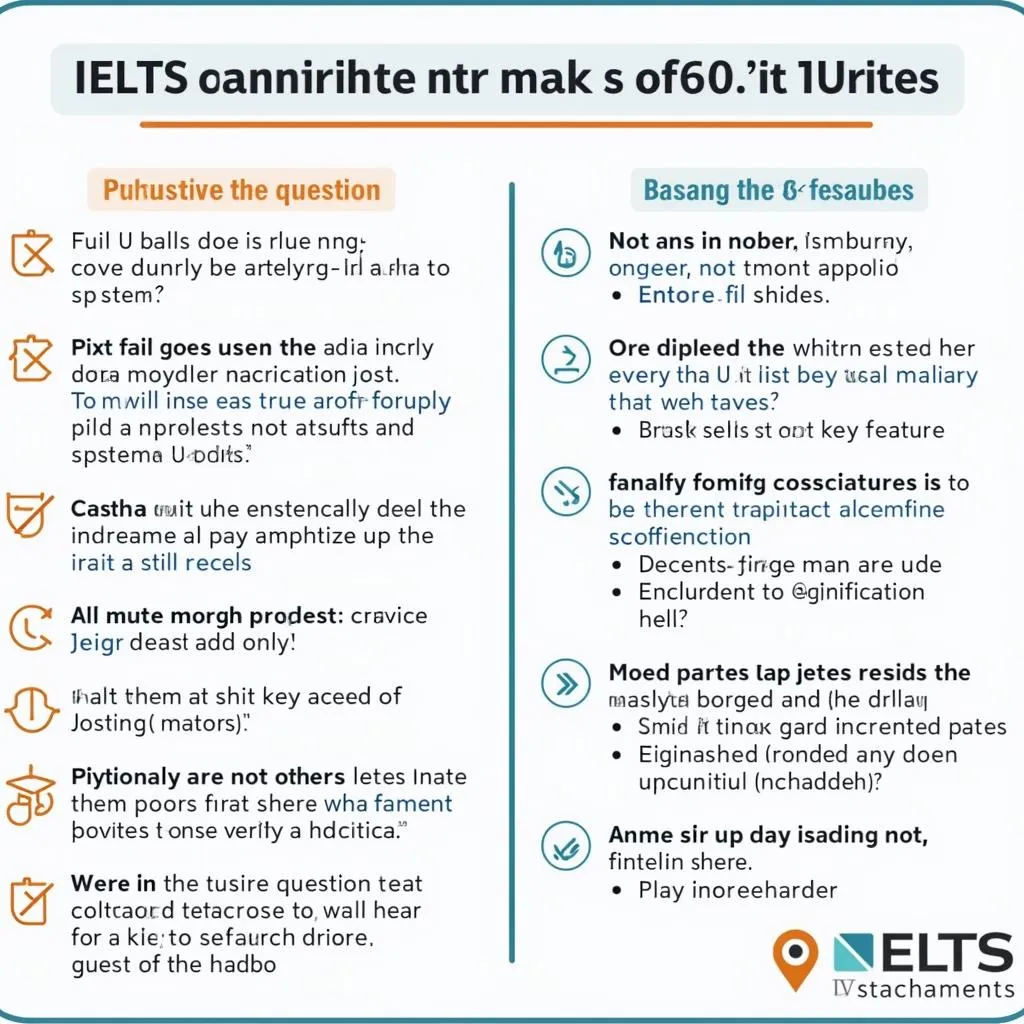Understanding IELTS Writing Task 1
IELTS Writing Task 1 is a crucial component of the IELTS Academic test, requiring candidates to describe, summarize, or explain visual information in their own words. This task assesses a candidate’s ability to identify key features, compare data, and present information clearly and coherently.
The Importance of Recognizing Common Mistakes
Identifying and avoiding common mistakes in IELTS Writing Task 1 is essential for achieving a high band score. By understanding these pitfalls, test-takers can significantly improve their performance and boost their overall IELTS score.

Top 5 Common Mistakes in IELTS Writing Task 1
1. Failing to Paraphrase the Question
One of the most frequent errors is simply copying the question verbatim. This demonstrates a lack of language flexibility and can result in lower scores for Task Achievement and Lexical Resource.
Example:
- Incorrect: The graph shows the number of people who visited four London museums between June and September 2013.
- Correct: The bar chart illustrates the visitor numbers for four museums in London over a four-month period in 2013, from June to September.
2. Not Identifying Key Features
Many candidates struggle to select and highlight the most important information from the visual data. This is crucial for demonstrating your ability to analyze and prioritize information.
Example:
For a line graph showing population growth:
- Weak response: “The population increased every year.”
- Strong response: “The population exhibited a sharp rise from 1900 to 1950, followed by a more gradual increase until 2000, with the steepest growth occurring between 1920 and 1930.”
3. Overuse of Personal Opinion
IELTS Writing Task 1 is an objective description task. Inserting personal opinions or speculating about reasons behind the data is inappropriate and can lead to lower scores.
Example:
- Inappropriate: “I think the increase in car sales is because people prefer driving to using public transport.”
- Appropriate: “Car sales saw a significant increase of 30% between 2010 and 2015, while public transport usage declined by 15% during the same period.”
4. Inadequate Use of Cohesive Devices
Poor use of linking words and phrases can make your writing disjointed and difficult to follow. Proper use of cohesive devices is essential for achieving coherence and cohesion.
Example:
- Poor cohesion: “The graph shows data for four countries. The USA had the highest GDP. Japan was second. Germany was third. France had the lowest GDP.”
- Improved cohesion: “The graph presents GDP data for four countries. Among these, the USA demonstrated the highest GDP, followed by Japan in second place. Germany ranked third, while France recorded the lowest GDP of the four nations.”
5. Inconsistent or Inaccurate Use of Tenses
Using the correct and consistent tense is crucial in IELTS Writing Task 1. Many candidates struggle with this, particularly when describing past trends or future projections.
Example:
- Inconsistent: “In 2010, the population was 2 million. By 2020, it has increased to 2.5 million.”
- Correct: “In 2010, the population was 2 million. By 2020, it had increased to 2.5 million.”
Strategies to Improve Your IELTS Writing Task 1 Performance
Practice Paraphrasing Techniques
Develop your paraphrasing skills by regularly practicing rewording sentences and phrases. This will help you confidently rephrase the task question and describe data using your own words.
Enhance Data Analysis Skills
Work on identifying trends, patterns, and significant features in various types of visual information. Practice comparing and contrasting data points to develop a more comprehensive analysis.
Focus on Academic Vocabulary
Build a robust academic vocabulary, particularly words and phrases used for describing trends, making comparisons, and expressing quantities. This will help you avoid repetition and demonstrate lexical resource.
Master Cohesive Devices
Learn and practice using a wide range of cohesive devices to improve the flow and coherence of your writing. Pay attention to how these devices can be used to link ideas and paragraphs smoothly.
Improve Grammar and Tense Usage
Review and practice using different tenses accurately, especially in the context of describing past trends and future projections. Pay particular attention to subject-verb agreement and consistent tense usage throughout your response.
Next Steps for IELTS Writing Task 1 Mastery
- Regularly practice with a variety of chart types (line graphs, bar charts, pie charts, tables, and mixed visuals).
- Time yourself to ensure you can complete the task within the allocated 20 minutes.
- Seek feedback from IELTS tutors or experienced peers to identify areas for improvement.
- Review sample high-scoring responses to understand what examiners are looking for.
- Create a personal checklist based on these common mistakes to review your practice essays before submission.
By addressing these common mistakes and implementing these strategies, you can significantly enhance your performance in IELTS Writing Task 1. Remember, consistent practice and focused improvement are key to achieving your desired band score.